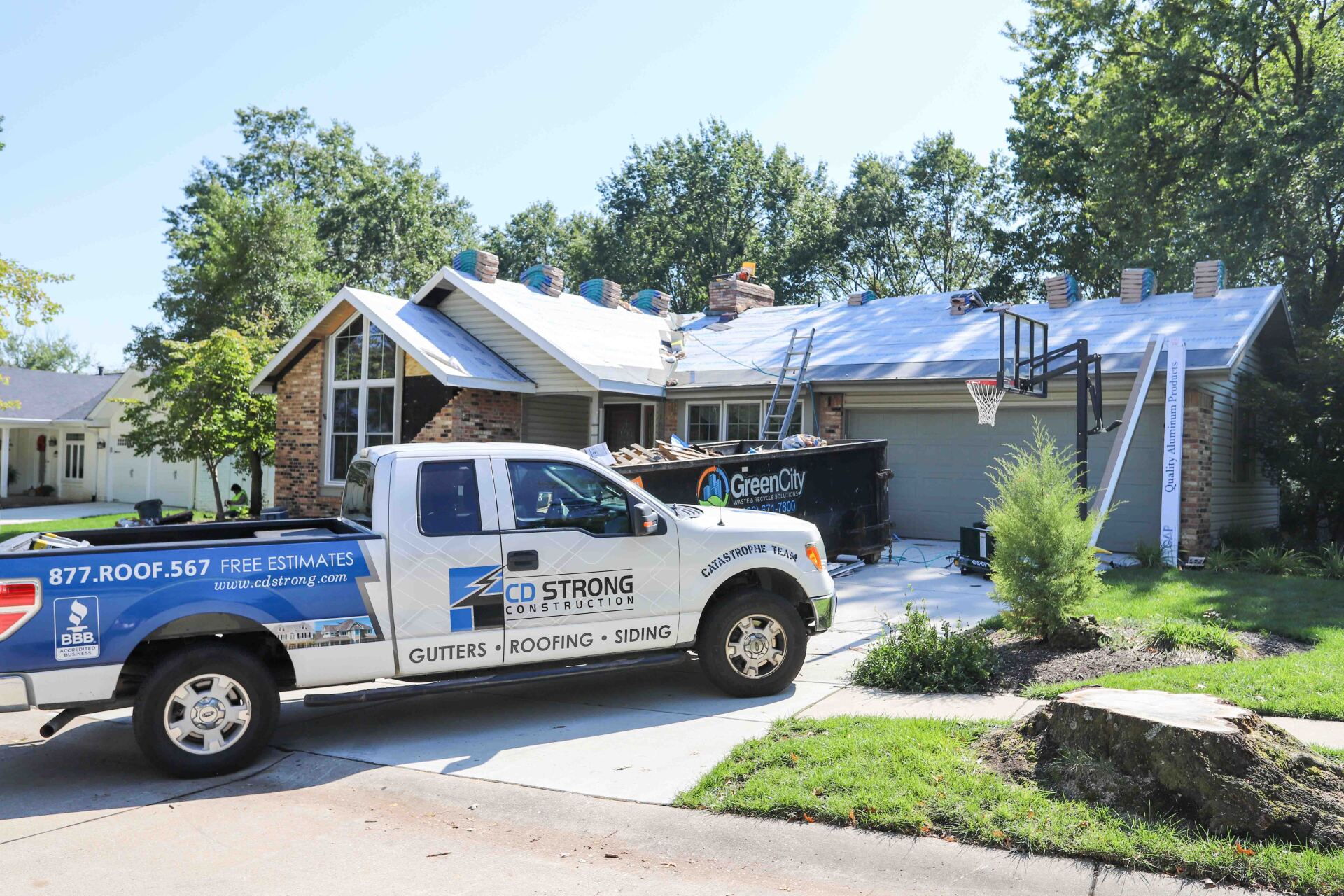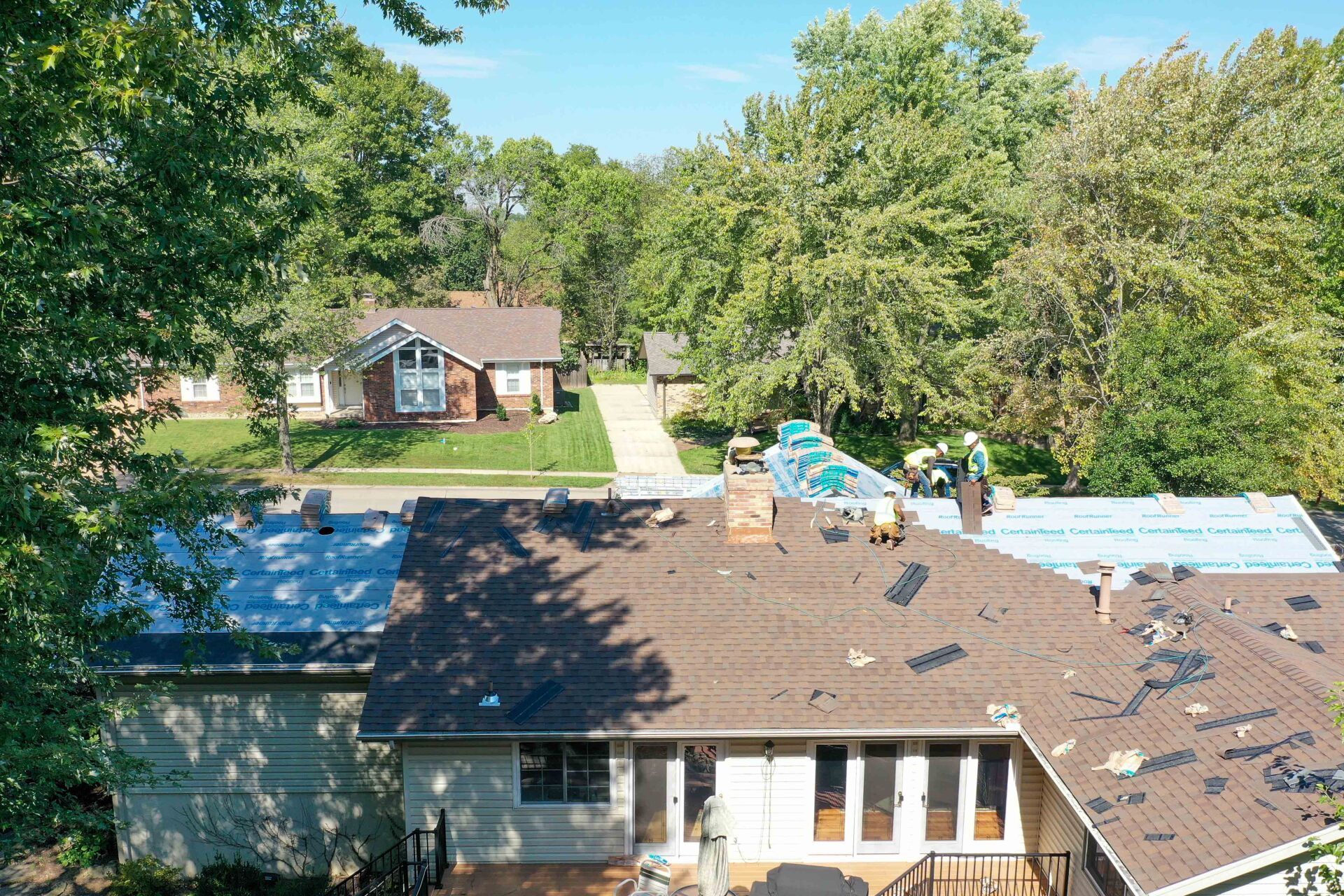
When it comes time to research roofing contractors for residential roofing repair or replacement, the options can seem endless and overwhelming. However, a little research and guidance can help narrow down your choices of contractors, and it’s important to ensure all of your questions are answered.
Our team has put together a guide with some of the residential roofing FAQs we get asked most as we work side-by-side with homeowners. If you still have questions, we’d love to chat more –
don’t hesitate to
get in touch!
How often do I need to replace the roof on my home?
On average, a home requires roof replacement every 8 to 10 years. The number could be much lower if you’ve sustained damage from weather or a fire. Aside from hiring a roofing team that uses the best materials, you’ll also need to have that team come back for regular inspections. This ensures that minor problems don’t become more major after some time.
How does a residential roofing inspection work?
First, we will conduct an interior inspection and check the home's inside for evidence of water intrusion. We might also check your attic for signs of aging, leaks, mold, and moisture. If there are any openings in your roof, they will also be identified, and your inspector may recommend you install insulation if your home doesn’t already prevent heat loss.
After the interior inspection is done, the roofer will conduct an exterior inspection and check the outside of the roof for signs of damage. The professional will look closer and record missing shingles, leaks, damaged flashing, cracked caulk, and more. Once the interior and exterior inspections are complete, you will receive a repair estimate.

What are the different types of residential roofing?
Residential metal roofing provides you with any roof style or color to complement your home perfectly. Aluminum can even be shaped to look like slate, tile, shingle, or shake. Although metal roofing costs more than other roofing types, a properly installed metal roof can save you money in the long run.
A gable roof features a simple yet effective design that enhances your residential roof's curb appeal and functionality. With a slope at each roof side, a gable roof allows moisture to run off the sides quickly, resulting in less moisture accumulation and potential for leaks.
Wood shingles and shakes provide a natural look to your home. They are commonly made out of cedar, redwood, or cypress. Installing wood shingles or shakes is complicated and should only be undertaken by a professional. These materials are generally chosen for looks and not durability.
Asphalt composition shingles are the most common roofing material in North America. They are commonly made of either fiberglass or recycled paper-based products mixed with asphalt, which is then covered with colored mineral granules. While they have a low installation cost, composition shingles will usually protect your home for about 10-15 years.
What can I do as a homeowner to help maintain my roof?
It’s probably the job that every homeowner loathes the most, but keeping your gutters clean and clog-free is a must. Clogs in gutters lead to water backup, and when winter weather or extreme rainfall hits, that water and snow end up piled on your roof. Over time, that water can cause unnecessary wear and tear, ultimately leading to a costly roofing project performed by the professionals.
The best rule of thumb is to visually inspect your roof at the beginning of each season and after any extreme weather. During these basic visual checks, look for missing shingles, holes, cracks, or bucking on the exterior. Head inside to crawl spaces and attics to look for pooling water, rays of light streaming through the roof, and nesting animals that may have had an open door to your house through damage to your roof.
Are you searching for the best roof repair & roof installers in the Midwest?
CD Strong your trusted roofing contractor

CD Strong Construction – License #104015053 – Your Trusted Roofing Contractor


